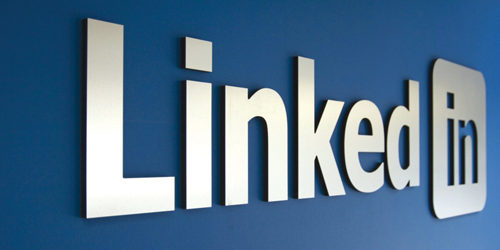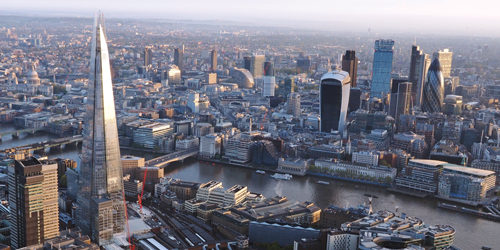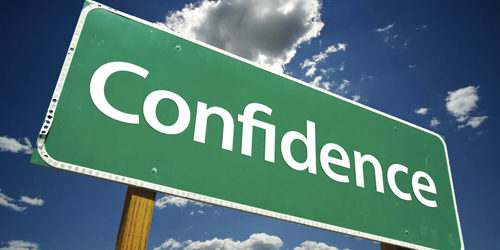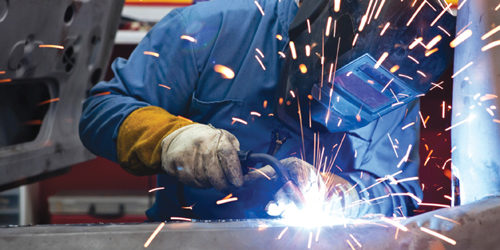
LinkedIn has 450 million users worldwide, with 20 million people actively using the platform in the United Kingdom. LinkedIn is the business social network, and has established itself as a powerful tool for networking, recruitment and sales.
The most important part of LinkedIn is your profile. This is essentially your online résumé, and is very important for professional branding. Google loves a good LinkedIn profile, and it is typically the most effective way to find your details when searching for your name online, almost always outranking the other social channels. Moreover, your LinkedIn profile is often the first place people will look you up when you meet them in any kind of business capacity face-to-face, so it absolutely pays to make sure it is first class.
In this article I will outline tips and best practices on how to build a first class profile on LinkedIn.
LinkedIn Profile Strength
There are five levels of LinkedIn profile strength, and your level is only visible to you when you visit your LinkedIn profile page. The levels range from Beginner, which is assigned to every new LinkedIn profile, through to Intermediate, Advanced, Expert and All-Star.
Your LinkedIn profile strength rating is important because it is part of what determines how highly you rank on the platform. This is particularly true in search results, and if your LinkedIn profile strength is anything below All-Star you will not rank well. Thankfully, reaching All-Star status is not that difficult, and with a little work you can comfortably reach this status by ensuring the following is in place:
• You have a profile photo
• Your profile lists 2 or more job positions that you’ve held
• You have 5 or more skills on your profile
• You have written a summary about yourself
• You have filled out your industry and included a postal code
• You have listed where you went to school
• You have 50 or more connections
• You regularly update and keep working on your LinkedIn profile
At first this may read like quite a list but it’s something that typically happens organically unless you are very inactive on the platform. But absolutely make the effort and you can reach LinkedIn’s official All-Star status very quickly.
The LinkedIn 500 Club
Once you’ve acquired All-Star status on LinkedIn it’s essential that you keep growing your network on the platform. There’s a difference between LinkedIn rating you as an All-Star and actually having an exceptional profile. For starters, the harsh reality is that unless you are very well known within your industry most people won’t take you seriously if you have less than 500 connections within your LinkedIn network. Indeed, that number is utilised by LinkedIn as a kind of badge of
honour, as once anyone exceeds that total it will always be displayed as “500+” and never anything higher. You could have 501 connections or 50,100, but any visitor to your profile will only see 500+. This is important social proof and does carry a lot of weight with people looking you up on LinkedIn at networking events and trade shows. While it’s important that you are connected to relevant people on LinkedIn, make the effort to get your connections above 500 as quickly as you can.
How To Build a Great LinkedIn Profile
Like all of social media you will only get back from LinkedIn what you are prepared to put in. In order to rank highly on searches within the platform and generate leads and business opportunities it’s essential that you regularly active on the platform and doing whatever you can to build a great profile.
Keep The Basics Updated
Make sure that the basic but important parts of your LinkedIn profile, such as your current employer, current position, dates and your professional headline – the part that details what you do at the very top of your profile – are always accurate and up-to-date.
Use a Professional Photograph
As much as we like to think that they don’t, people will always judge books by their covers, and on LinkedIn your “cover” is your profile photograph. This is something that must look professional and all-business, and is absolutely worth considering paying for a professional photograph. This photo should be recent and it should only be of you – not a picture with colleagues, loved ones or pets. Most importantly it must look like you look now, so if you have a big change in appearance be sure to update your LinkedIn photo.
Write a Great Summary
The summary at the top of your LinkedIn profile is a really great opportunity to sell yourself. Many visitors to your profile won’t get past your photo, professional headline and summary, so it’s essential that you keep it updated and write it in a style that is easy to read and showcases the best of your abilities and experience.
Triple Check Spelling and Grammar
This is another one of those things that is easy to dismiss but can fundamentally impact how people feel about you online. Be sure to check all spelling and grammar, and avoid typos at all costs.
Keywords = Discoverability
The use of keywords in your profile plays a big part in how people find you on LinkedIn, both within the platform and through a search on Google. So take some time to think about what it is that you want to be found for and then make sure that relevant keywords have then been inserted into your profile. Don’t go overboard – you don’t want to give the appearance of trying to spam or game the system – but good keywords can often be the difference between being visible and invisible on LinkedIn.
Network, Network, Network
I touched on this above but the entire point of LinkedIn is to network with people, and this includes new people. While you should absolutely connect with colleagues and clients, aspirational networking on LinkedIn – connecting with people you want to know more about and potentially do business with – is not only a powerful way to grow your network, it’s essential to getting the most out of the platform. Seek out influencers and thought leaders in your sector and invite them to your LinkedIn network – you’ll be amazed how many people will be more than happy to connect.
Personalise The Invitation To Connect
When you connect with someone on LinkedIn you get a very generic “I’d like to add you to my professional network on LinkedIn” message as the default. This is obviously quite boring and generic, and for best results it’s important that you tailor and personalise your invitation message with each new connection.
Think about how you met that person, or why you want to connect. Avoid sales pitches, but do try and sell yourself.
One final tip: did you know that you can download a spreadsheet of all of your LinkedIn contacts? Simply click on My Network > Connections and then the Settings (gear) icon, and under Advanced Settings, click on “Export LinkedIn Connections”. This downloads a CSV file of everyone in your LinkedIn network, including their name, email, company, position and more. What an incredible tool for sales prospecting!






